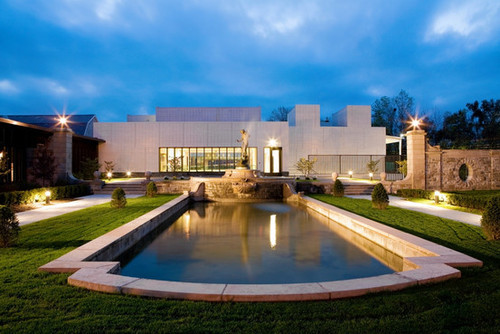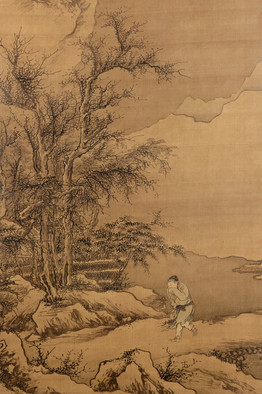The National YoungArts Foundation has purchased the famous Bacardi complex in Miami, with plans to create — with Frank Gehry’s help — a new center of arts activity.

A pair of historic, glittering buildings sat empty beside a busy Miami thoroughfare. An arts foundation with a nomadic background was looking for a place to plant permanent roots and expand.
That is how the National YoungArts Foundation, founded 31 years ago by Ted and Lin Arison, came to find its new home: the iconic Bacardi Tower and Museum complex along Biscayne Boulevard. The campus will get a Frank Gehry-designed master plan and year-round programming to link downtown’s burgeoning arts scene with the hip Wynwood and Design District neighborhoods.
Officials with the organization and company will announce the news Wednesday.
“This was really, I believe, a match made in heaven,” said Paul T. Lehr, executive director of YoungArts. “There was no better place for us to go and there was no better purchaser for this campus than us and what we were going to do.”
Lehr said Bacardi U.S.A. sold the 3.3-acre site at 2100 Biscayne Blvd. to the foundation for $10 million, though the market value was over $20 million. The blue and white tiled tower, by architect Enrique Gutiérrez, was completed in 1963. The mosaic square known as the “jewel box,” designed by Ignacio Carrera-Justiz, was added in 1975.
They were designated as historic in 2009 by Miami’s historic preservation board.
Facundo L. Bacardi, chairman of the board of spirits producer Bacardi Limited, said the sale wasn’t about making money. The privately held company moved its Americas headquarters to Coral Gables in 2009 and has maintained the Biscayne Boulevard site but used it only rarely.
When Lehr approached him with the idea about nine months ago and discussions started within the company, “it was kind of like a light bulb went off,” Bacardi said.
“We were looking for somebody to extend the legacy of the property and how much it means to us,” he said. “I don’t think we could’ve come up with a better partner.”
While closely guarded, the news had been shared with some YoungArts supporters in recent days. Reactions were enthusiastic.
“It’s not only a milestone in Miami’s evolution as a cultural community, I think it’ll be a powerful magnet for talent for decades to come,” said Alberto Ibargüen, president and CEO of the John S. and James L. Knight Foundation, which has supported the organization. “The whole thing just strikes me as perfect for a cultural center for this town.”
Despite working with more than 16,000 students over the last 31 years — including alumni like Vanessa Williams and Nicki Minaj, who have become household names — YoungArts has kept a relatively low profile. The organization finds and nurtures artists 15 and older, bringing in 150 a year for a week of intensive classes with masters in their field.
Even with its new home, the foundation is also planning a huge expansion of activities beyond Miami, including year-round events in New York, a Los Angeles version of Miami’s YoungArts Week and continued presence in Washington as the only nominating agency for the Presidential Scholars in the Arts.
“It’s all coming together at once,” Lin Arison said. “That’s because it’s meant to be. We’ve been doing our quiet work for 31 years, and now it is going to become visible.”
As the foundation expands nationally, it has added Gehry, singer Plácido Domingo and dancer, choreographer and director Bill T. Jones as artistic advisors. And it has added a 10th discipline, architecture and design, to a lineup that includes cinematic arts, dance, jazz, music, photography, theater, visual arts, voice and writing.
And its YoungArts MasterClass television program, which has appeared on HBO, is being used in public schools in Miami, New York and Los Angeles with a teachers guide so educators can use lessons from mentors in their classes.
Arison, who said she sold paintings by Claude Monet and Amedeo Modigliani to support the move, envisions the new campus as a place where visual arts by alumni will be displayed year-round, popular art walks in the nearby Wynwood district will spill over and outside projections like the well-known wallcasts at the New World Center will take place. Gehry designed the new Miami Beach home for the New World Symphony, which the Arisons co-founded.
“Once people get in here, they’re going to own it,” Arison said. “The kids are going to own it, the mentors are going to own it and hopefully the community is going to own it.”
While YoungArts will move its administrative headquarters into the new building by mid-October, the timeline for the rest of the project was not yet known. Mentors in the program will be asked for input on how the space should be used, and Gehry will involve students in the overall design of the campus.
“Whatever she wants me to do, I’ll do,” Gehry said of Arison.
An office area next to the tower building will be transformed into a performance space, and a parking lot will become a park that will attach to the existing plaza and green space, Lehr said.
“It’s nice that they’re taking over a building that’s a symbol in Miami but has been underused in the last years,” said Meaghan Lloyd, a partner in Gehry’s firm. “We’re very happy to be part of that story, which is a big part of the history of Miami.”
Yara Travieso, 26, remembers the complex from her days growing up in Miami-Dade with an architect father; they would drive around admiring buildings in the area, and the Bacardi structures were a favorite.
Now a New York-based director and choreographer who attended The Juilliard School on a full scholarship thanks to her involvement in YoungArts as a student, Travieso said she is overjoyed about the organization’s new permanent home.
“I think it’s perfect timing, it’s the perfect location,” she said. “This new generation needs that.”
Michael Kaiser, president of the John F. Kennedy Center for the Performing Arts and a consultant who has worked with YoungArts for more than a year, said young people are involved in much of Miami’s artistic momentum.
“This is about vibrancy and youth, which seems so fitting for this city to make this the calling card,” he said. “Arts organizations all over America are trying to find ways to engage younger people, and Miami’s going to be truly the center of activity for younger people and serious engagement for young people with the arts.”
-By Hannah Sampson
Read more here: http://www.miamiherald.com/2012/10/02/3031487/youngarts-to-move-into-miamis.html#storylink=cpy




![[image]](http://si.wsj.net/public/resources/images/WK-BD304A_ARENA_DV_20120920220250.jpg) Sotheby's
Sotheby's
![[image]](http://si.wsj.net/public/resources/images/WK-BD305_ARENA_DV_20120920220326.jpg) Sotheby's
Sotheby's

